Vaping is rapidly becoming a crisis in UK schools, leaving educators and parents searching for answers in 2025. Alarming trends show that incidents continue to rise, challenging traditional approaches to student wellbeing.
This complete school vape policy solution offers school leaders a clear path forward. Backed by research and expert insights, the guide delivers actionable steps and frameworks to create safer learning environments.
Explore the full scope of the vaping crisis, understand legal responsibilities, and discover the latest policy development, enforcement strategies, and detection technologies. Take the first step towards a healthier, vape-free school community.
Understanding the School Vaping Crisis in 2025
The rapid rise in vaping among UK students has created a complex challenge for school leaders. As the search for a comprehensive school vape policy solution intensifies, understanding the scale and causes of the crisis is essential. In 2025, the issue is more urgent than ever, with schools facing mounting pressure to respond effectively.

The rise of vaping among students
Vaping has surged in popularity among secondary school students, with recent surveys indicating a sharp increase in incidents across the UK. According to the NASUWT Survey on School Vaping, over half of secondary school teachers reported at least one vaping incident in the previous term. This data underscores the urgent need for a robust school vape policy solution.
Several factors are fuelling this trend. E-cigarettes are often marketed as less harmful alternatives to smoking, leading to widespread misconceptions about their safety. Flavoured vapes and sleek designs appeal to younger audiences, while the easy availability of these products, both online and in local shops, lowers barriers to access. Social media platforms play a significant role in normalising vaping, with influencers and peer-to-peer sharing making it seem fashionable and risk-free.
The health risks associated with e-cigarettes are frequently underestimated. While vapes lack many of the harmful chemicals found in traditional cigarettes, they still contain addictive nicotine and other substances that can impact adolescent brain development. Misconceptions about harmlessness contribute to more students experimenting with vaping, reinforcing the need for a school vape policy solution that addresses both prevention and education.
Vaping also disrupts the learning environment. Teachers report increased distractions, more frequent trips to the toilets, and a decline in concentration among students suspected of vaping. In one recent case, a high-profile incident at a London secondary school saw multiple students suspended after being caught using vapes during lessons. Such events highlight the disruptive impact on classroom behaviour and the importance of a school vape policy solution tailored to these realities.
Staff face significant challenges in identifying and managing vaping incidents. Unlike smoking, vaping is discreet and leaves minimal odour, making detection difficult. Teachers often feel ill-equipped to address incidents, and the lack of clear guidelines can lead to inconsistent enforcement. These factors make it crucial for schools to adopt a cohesive school vape policy solution that empowers staff and protects students.
Legal and regulatory framework
Schools must navigate a complex legal landscape when developing a school vape policy solution. As of 2025, the UK government has tightened regulations around vaping in educational settings, reflecting growing concern over youth access and health risks. The Tobacco and Vapes Bill 2025 and updated guidance from the Department for Education now require all schools to implement clear anti-vaping measures.
Recent legislative changes mean that schools must treat vaping as a safeguarding issue, not just a behavioural one. The duty of care extends to preventing harm from both tobacco and e-cigarettes, and this responsibility is a core part of any effective school vape policy solution. Ofsted inspections now include a focus on student health and safety, with inspectors looking for evidence of proactive measures to reduce vaping and support affected students.
Schools that fail to comply with these regulations risk significant penalties. These can include formal warnings, negative inspection outcomes, and reputational damage. More importantly, non-compliance may put students at risk, undermining the school’s safeguarding obligations. It is essential for school leaders to stay informed about legal requirements and ensure their school vape policy solution meets current standards.
A school’s policy must also consider the integration of new detection technologies, staff training, and educational initiatives. By aligning their approach with statutory guidance and best practice, schools can demonstrate a commitment to student welfare. Regular policy reviews and stakeholder engagement are vital to maintaining compliance and adapting to future changes in legislation.
In summary, understanding the school vaping crisis in 2025 requires a clear grasp of both the scale of the issue and the regulatory context. Only with a comprehensive school vape policy solution can schools hope to protect students, meet their legal obligations, and foster a healthier learning environment.
Step-by-Step Guide to Developing a School Vape Policy
Developing a robust school vape policy solution is essential for every UK school in 2025. An effective approach requires careful assessment, clear objectives, structured frameworks, strong stakeholder engagement, and transparent policy approval. This guide breaks down each step, offering practical advice to help your school create a safer, healthier learning environment.

Step 1: Assessing the current situation
The first step in any school vape policy solution is to understand the scale and nature of vaping within your school. Begin by conducting anonymous surveys among students and staff to identify vaping prevalence and perceptions. Use audits to check facilities and identify high-risk areas such as toilets, corridors, and playgrounds.
Gather input from a range of sources:
- Incident and disciplinary reports
- Staff observations
- Parental feedback
- Student focus groups
Analyse patterns in reported incidents to determine when and where vaping is most likely to occur. Pilot programmes using vape detection technology can offer valuable baseline data and highlight problem hotspots. This assessment forms the foundation for a targeted and effective school vape policy solution.
Step 2: Setting clear policy objectives
A successful school vape policy solution must have well-defined objectives that reflect your school's values and statutory safeguarding duties. Ask: What do you want the policy to achieve? Objectives should address prevention, education, and enforcement, providing a balanced approach.
Common objectives include:
- Reducing vaping incidents on school grounds
- Increasing awareness of health risks among students
- Supporting students who want to quit vaping
- Ensuring consistent enforcement of rules
Align these objectives with existing school policies, such as behaviour and anti-bullying frameworks. Clarity at this stage ensures your school vape policy solution addresses both immediate risks and long-term wellbeing.
Step 3: Drafting the policy framework
Drafting a clear, accessible framework is central to an effective school vape policy solution. The policy should outline age-appropriate rules, disciplinary actions, and the school's stance on vaping-related devices. Integrate the policy with your behaviour and safeguarding protocols for consistency.
Key components to include:
- Definitions of vaping and related products
- Prohibited areas and times
- Procedures for reporting and investigating incidents
- Disciplinary measures and restorative options
To streamline this process, consider using resources such as the Creating a vape-free policy template, which offers guidance and a ready-made template tailored for schools. Ensure the policy language is clear and accessible to all stakeholders, including students, parents, and staff.
Step 4: Securing stakeholder buy-in
The effectiveness of any school vape policy solution depends on broad support from your school community. Involve teachers, governors, parents, and students at all stages of policy development. Their perspectives can help identify potential challenges and improve acceptance.
Use a mix of communication strategies:
- Information sessions for staff and parents
- Student assemblies and focus groups
- Regular updates through newsletters and digital platforms
Address concerns and misconceptions openly. A collaborative approach fosters a sense of ownership and increases the likelihood that your school vape policy solution will be respected and followed.
| Stakeholder | Role in Policy Development |
|---|---|
| Governors | Formal approval, oversight |
| Teachers | Policy enforcement, feedback |
| Parents | Support at home, communication |
| Students | Input, peer influence |
Step 5: Policy approval and publication
Once the draft is complete, seek formal approval from school leadership and governors. Publish the final school vape policy solution across accessible channels, such as the school website, handbooks, and parent communications.
Set clear review dates and assign accountability for monitoring the policy's effectiveness. Transparency about expectations and consequences is vital. Make sure everyone in the school community knows where to find the policy and understands their role in upholding it.
Regularly review and update the policy in response to incident trends and new legislation to ensure your school vape policy solution remains effective and relevant.
Implementing and Enforcing the Vape Policy
Creating a comprehensive school vape policy solution is only effective when it is implemented with precision and consistency. Schools must bridge the gap between policy and practice by equipping staff, engaging students, enforcing rules, and monitoring compliance. These steps are vital in ensuring a safe and healthy learning environment for all.
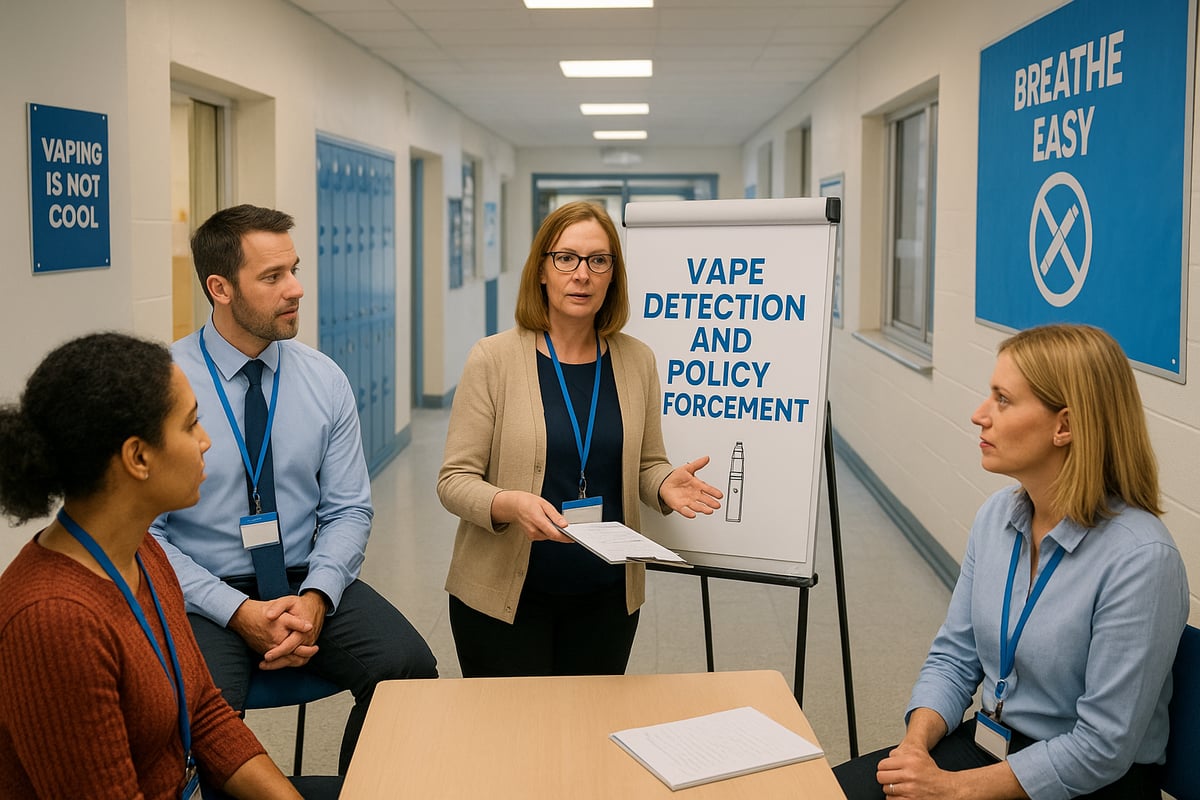
Staff training and support
The foundation of any school vape policy solution lies in well trained staff. Teachers and support staff should participate in targeted training sessions that cover the latest vaping trends, health risks, and identification of vaping devices. Training must also address how to recognise signs of vaping or substance misuse, including subtle behavioural changes.
Practical workshops can equip staff with clear procedures for reporting and responding to incidents. This includes knowing when to involve safeguarding leads and how to document cases for future reference. Staff benefit from roleplay scenarios to build confidence in real life situations.
Equally important is providing pastoral support for students caught vaping. Staff must be ready to offer guidance, signpost to counselling services, and foster a supportive rather than punitive atmosphere. When staff feel empowered and informed, the school vape policy solution becomes a living part of the school's safeguarding culture.
Student education and engagement
Empowering students is integral to a successful school vape policy solution. Vaping education should be embedded within PSHE and health curricula, addressing both the health risks and the social pressures students face. Interactive workshops and assemblies, sometimes delivered by external experts, can debunk myths and promote informed choices.
Peer-led initiatives, such as student ambassador programmes, encourage positive role modelling. Students are more likely to listen to their peers, making these initiatives particularly effective. For schools seeking ready made materials and resources, the Vaping education hub for schools offers comprehensive lesson plans, posters, and campaign ideas.
Active student engagement ensures the school vape policy solution is not just a set of rules, but a shared commitment to wellbeing. Open dialogue and creative activities help students understand the consequences of vaping and empower them to resist peer pressure.
Consistent enforcement and disciplinary action
For a school vape policy solution to be credible, enforcement must be fair, consistent, and transparent. Staff should follow a clear set of disciplinary procedures for policy breaches, starting with warnings and escalating to parental involvement or other sanctions as appropriate. A step-by-step approach ensures all incidents are handled uniformly, reducing confusion and bias.
Balancing deterrence with restorative practices is crucial. While consequences for vaping must be communicated clearly, restorative conversations can help students reflect on their choices and repair harm. This approach supports behaviour change rather than simple punishment.
Regular communication with students and parents reinforces expectations and builds trust. By consistently applying the school vape policy solution, schools send a strong message that health and safety are non negotiable priorities.
Monitoring compliance and adapting enforcement
Ongoing monitoring strengthens the school vape policy solution and ensures it remains effective. Routine spot checks in high risk areas, such as toilets and corridors, act as visible deterrents. Staff can use incident logs and reports to identify trends or emerging hotspots.
Data analysis helps schools adapt enforcement strategies in response to new challenges. For example, an increase in incidents during specific times may prompt targeted supervision. Regular reviews of incident data allow school leaders to refine the policy and address any gaps.
Continuous adaptation ensures that the school vape policy solution evolves alongside student behaviour and emerging vaping trends. By being proactive and data driven, schools can maintain a safe environment and uphold the integrity of their policy.
Leveraging Technology for Vape Detection and Prevention
The rapid rise of vaping in schools has made it clear that traditional monitoring is no longer enough. Today’s school vape policy solution must leverage technology to both detect and prevent vaping incidents with accuracy and consistency. By integrating advanced detection systems, schools can strengthen their policies, reduce staff burden, and respond quickly to new challenges.
The role of vape detection systems in schools
Vape detection technology is transforming the way schools address vaping. These systems use advanced sensors to monitor air quality and identify chemical signatures linked to e-cigarette use. For any school seeking a robust school vape policy solution, such tools offer a proactive layer of protection.
Key benefits include:
- Real-time alerts to staff when vaping is detected
- Consistent monitoring across classrooms, toilets, and communal spaces
- Data logs that support policy enforcement and incident tracking
However, there are considerations to address. Some systems require careful placement to avoid false positives. Privacy must be respected, and cost can be a barrier for some schools. Selecting the right solution is crucial. For a comprehensive overview of available options, Best vape detectors for schools provides detailed comparisons tailored for educational settings.
A modern school vape policy solution should integrate detection technology with clear protocols, supporting both prevention and swift intervention.
Vape Guardian’s Advanced Detection Solutions
Vape Guardian has emerged as a leader in supporting the school vape policy solution. Their air quality monitoring and vape detection systems are designed specifically for education, allowing seamless integration with safeguarding protocols.
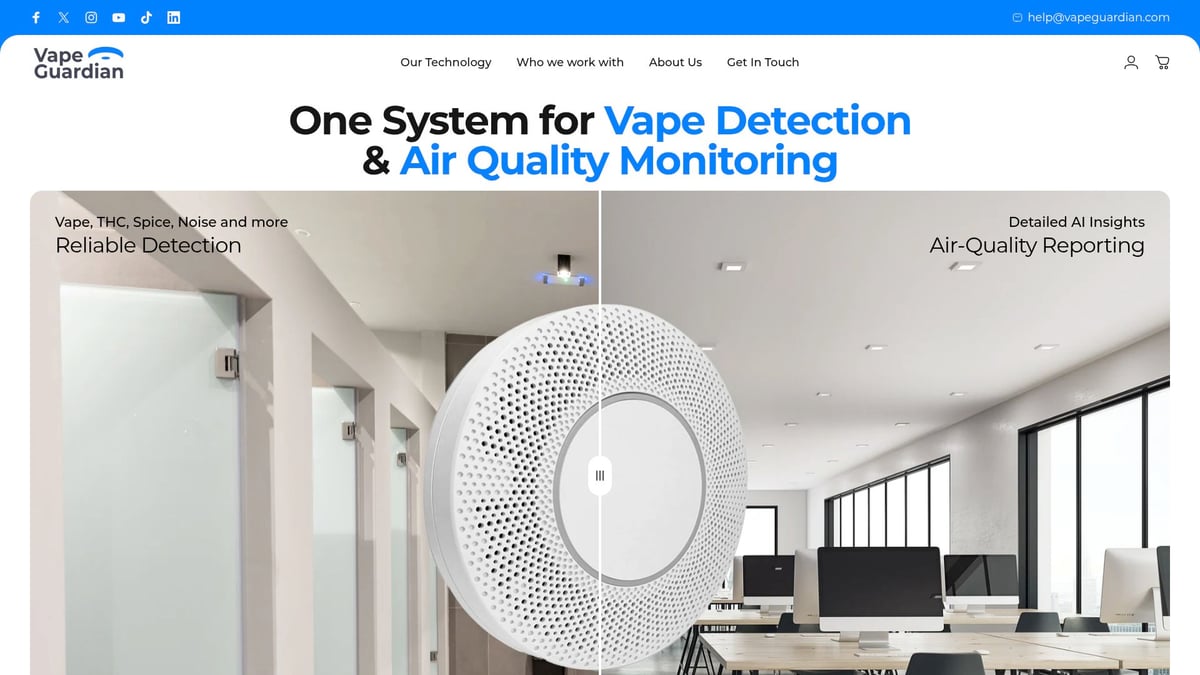
Key features include:
- Instant alerts to designated staff
- Automated incident reporting
- Detection of not just vaping, but also drug use and anti-social behaviour
- Customisable sensitivity settings for different school environments
These systems have already been successfully deployed in UK schools, resulting in measurable reductions in vaping incidents. Vape Guardian also offers training and ongoing support to ensure staff are confident in using the technology, which is vital for a sustainable school vape policy solution.
By adopting comprehensive detection solutions, schools can create safer environments, reinforce their policies, and meet both legal and Ofsted requirements.
Data-driven decision making
A truly effective school vape policy solution does not end with technology installation. The real power lies in using detection data to inform ongoing decision making.
Schools can analyse incident data to identify hotspots, track trends over time, and pinpoint times of higher risk. This insight allows leaders to refine policies, target interventions, and allocate resources more efficiently.
Data-driven strategies support a continuous cycle of improvement. By regularly reviewing detection outcomes, schools can adapt quickly to emerging trends, ensuring their school vape policy solution remains relevant, evidence-based, and effective.
Policy Evaluation, Review, and Continuous Improvement
Regular evaluation is vital for any effective school vape policy solution. Without ongoing review, even the best plans risk becoming outdated. Leaders must ensure their school vape policy solution evolves with changing student behaviours and regulatory demands.
Measuring policy effectiveness
The first step in evaluating a school vape policy solution is to define clear metrics for success. Key performance indicators may include reductions in vaping incidents, improved student feedback, or positive staff reports on policy clarity.
Schools should conduct regular audits and reviews, gathering evidence from multiple sources. This could involve analysing incident data, surveying students and staff, and holding feedback sessions with parents. By collecting a wide range of insights, leaders can pinpoint what works and where challenges remain.
It is essential to involve all stakeholders in this process. Referencing the ASH Vaping Guidance for Schools can support your school vape policy solution with best practice approaches and safeguarding advice. Transparent evaluation builds trust and encourages ongoing improvement.
Adapting to emerging trends and challenges
Vaping products and tactics are evolving rapidly. A successful school vape policy solution must remain flexible and responsive. Schools should monitor new devices, flavours, and marketing strategies targeting students. Staying informed helps prevent policy gaps that students might exploit.
Legislation changes often impact what is required of schools. Regularly reviewing updates from government and local authorities is crucial. For instance, new rules outlined in the UK school vaping laws 2025 may affect your school's obligations. Adjusting your school vape policy solution in line with legal changes demonstrates a proactive commitment to compliance and student welfare.
Benchmarking against other schools and local authorities can also highlight innovative solutions and help refine your approach.
Building a culture of health and safety
A robust school vape policy solution is most effective when it is embedded in the school's culture. Encourage open dialogue among students, staff, and families about vaping and substance misuse. Create safe spaces for discussion and make it easy for students to voice concerns or seek support.
Celebrate policy successes, such as reductions in incidents or student-led initiatives promoting healthy choices. Recognise positive behaviour through assemblies, newsletters, or reward systems. Continuous education and engagement sustain momentum and remind everyone that health and safety are shared priorities.
By fostering a supportive environment, your school vape policy solution will not only address current challenges but also build resilience against future risks.
As we’ve explored, navigating the rise of vaping in schools takes more than just a policy—it’s about combining clear guidelines, education, and the right technology to truly make a difference. If you’re looking for practical solutions to protect your students and strengthen your school’s approach, it helps to see real-world examples in action. To discover how advanced detection and air quality monitoring are already making UK schools safer, I invite you to learn how Vape Guardian is protecting schools. You’ll find insights, success stories, and practical steps you can take next.
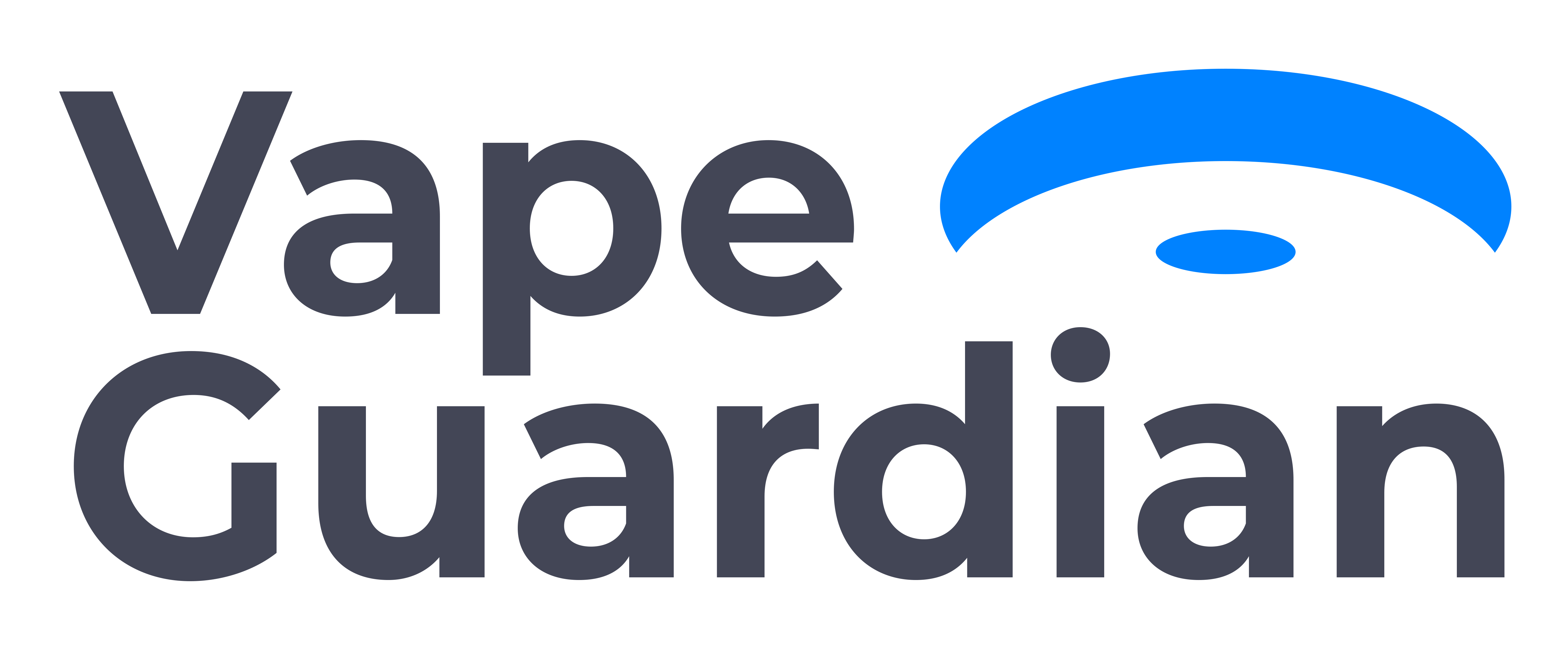
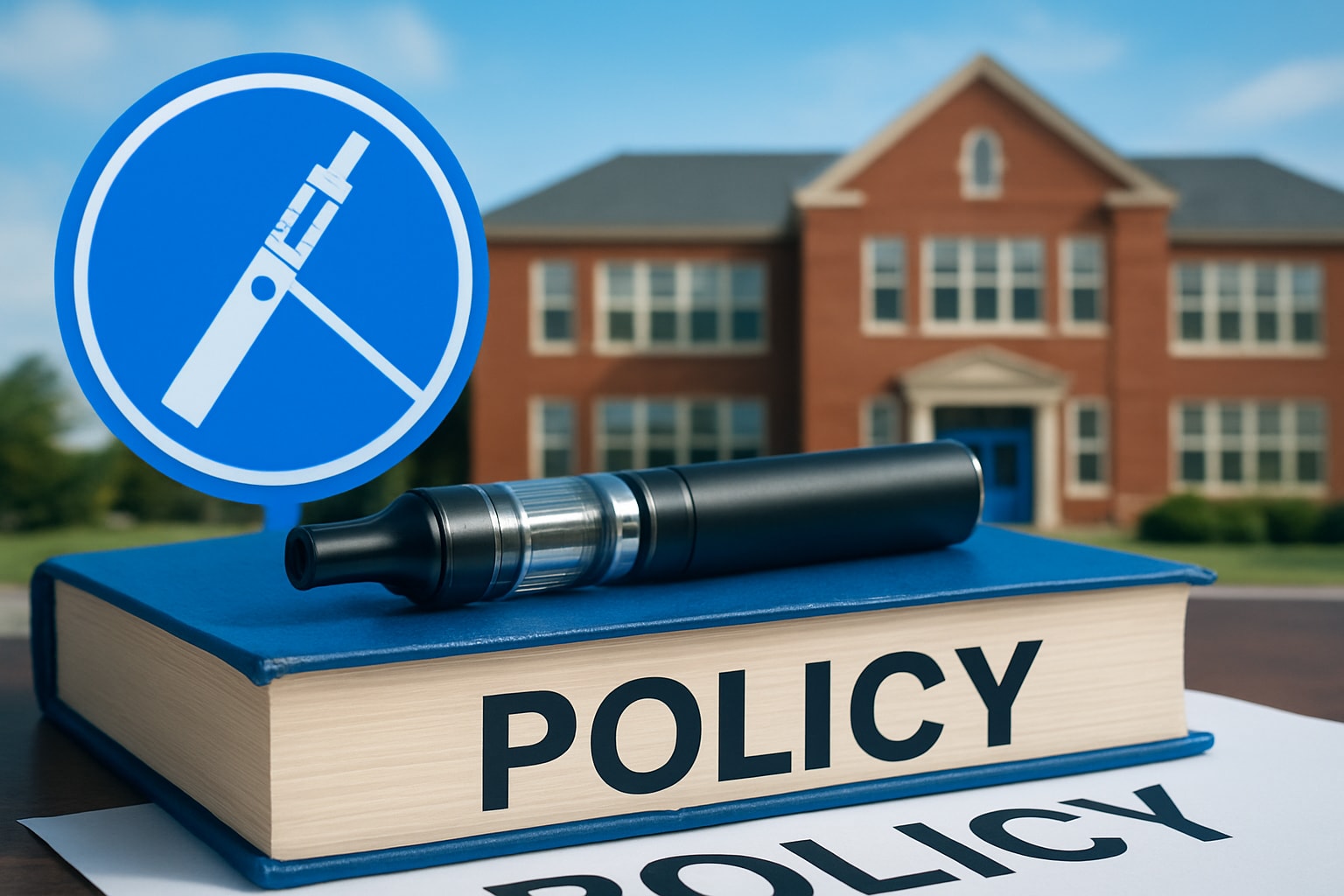






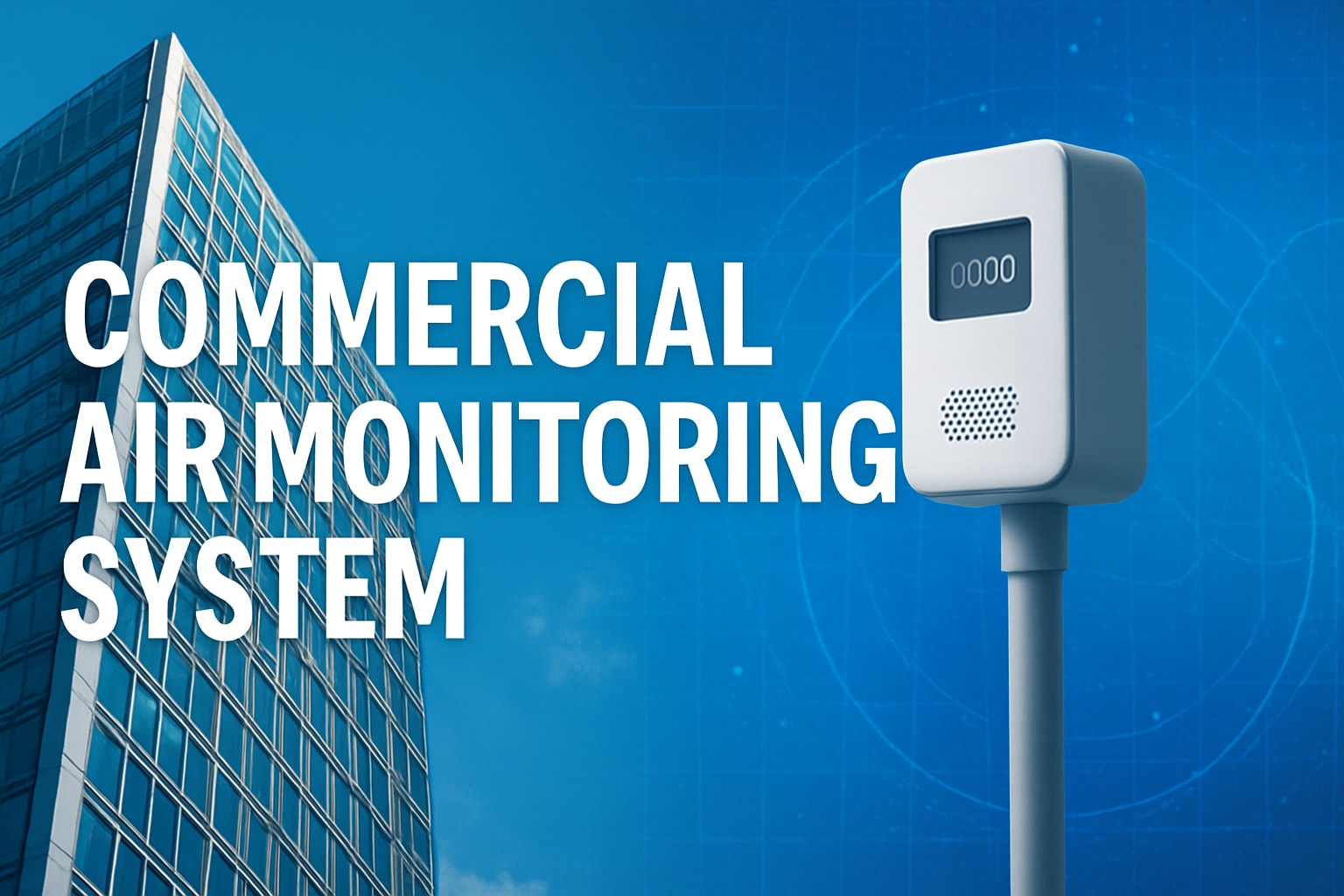


Share:
The Ultimate Guide to Anti Vaping Technology in 2025
Step-by-Step Guide to Detect Vaping in Toilets (2025)